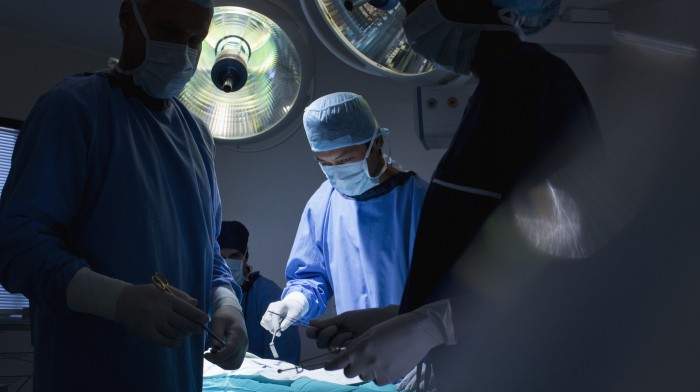By definition, cryopreservation is a method of exposing any living thing to freezing temperatures low enough to prevent decay and promote preservation. We’ve all heard stories of legendary celebrities being cryogenically preserved to await biological resurrection, but it’s sometimes hard to tell what is truth and what is merely a glamorous lie.
While current technology can’t quite bring someone back from the dead, scientists and doctors do use cryopreservation techniques every day to achieve extraordinary results. For example, within the field of infertility, doctors use cryopreserved eggs and embryos to produce thousands of successful pregnancies. Egg donors’ contributions are frozen via vitrification, a specialized form of cryogenics that employs rapid-freeze methods to preserve and protect eggs from ice crystal formation.
Want to know more? Check out these ten amazing facts about cryopreservation and the ways it’s being used.
10 Cryopreservation Can Occur Naturally
Some species have figured out how to survive cryopreservation without medical intervention. Most famously, a microscopic organism known as the water bear can replace the water in its body with a type of sugar that will not crystallize when exposed to freezing temperatures. This biological phenomenon allows them to survive the thawing process in a way most natural organisms can’t.
9 Cryogenics can Help Improve Patient Responses to Chemotherapy Treatments
Hematopoietic stem cells, most commonly found in the human’s bone marrow, can be an essential part of patient recovery following high-volume chemotherapy treatments. Prior to starting these treatments, doctors may collect a sample of these stem cells and cryogenically freeze them. After the chemo process has concluded, the collected specimen will be thawed and reintroduced into a patient’s system to protect against the negative effects that these intense treatments can have on an individual’s recovery.
8 Medical Research is Gainfully Enhanced by Cryogenic Technology
The ability to preserve a wide array of molecules and cells provides scientists with the tools they need to perform medically advanced testing and experimentation. Not only does cryopreservation provide the specimens that are necessary for researchers, but it also allows these professionals to regulate how to use them.
7 Cord Blood Banking is Made Possible with Cryopreservation
For many new parents, the idea of collecting and storing cord blood stem cells following their child’s birth is a comforting safety net. Thanks to their regenerative properties, these cells can assist in treating a variety of diseases, including:
- Cerebral Palsy
- Anemia
- Osteoporosis
- Various Cancers
6 Cryogenic Biology is a Progressive Way of Conserving Plant Life
By cryogenically freezing various seeds, tissues, and plant shoots, our environment is protected against the loss of vital medicinal plants and tropical flora. Since many species of medicinal plants play such an important role in modern medical treatments, high-tech freezing technology is ensuring their preservation.
5 We are on the Brink of Preserving Human Organs, Thanks to Cryopreservation
While the preservation of cryogenically frozen organs is still in its experimental stage, scientists have made exponential progress in this field. Not only have we seen a rabbit’s kidney be completely vitrified, thawed, and successfully transplanted, we have also seen vast growth in the study of human organs and specimens. Most recently, a study published in the journal Science Translational Medicine discussed a heart valve and blood vessels that were cryopreserved and then thawed out without damage.
4 Men are Granted More Options Using Cryogenically Frozen Sperm
Whether a donor is needed to treat male infertility, or a man chooses to freeze his sperm as a backup following a vasectomy, cryopreservation provides men with opportunities and choices they may not have had in the past. Advanced cryoprotectants used during the vitrification process ensure the protection of the sperm from the damaging effects that could naturally occur during freezing. It means that upon thawing, the previously frozen sperm will maintain the same quality they had upon collection.
3 Cryosurgery is Changing the Way Doctors Treat Patients
For some time, cryosurgery has been used by medical professionals to treat a wide array of dermatological issues. Procedures, like removing warts and repairing skin lesions, are all greatly improved by this cryogenic technology. Some of the benefits include:
- Minimal Preparation Time
- Low Risk of Infection
- Reduced Scarring
- Improved Recovery and Wound Treatment
Primarily performed using liquid nitrogen, cryotherapy (as it’s also known) is now being used as a method of treating cancer patients. The extremely low temperatures used during cryogenic procedures help destroy the cancerous cells and irregular tissues.
2 Cryopreservation is Improving Blood Storage Techniques
One of the most well-known and important uses of cryopreservation is its use in storing blood. Given that blood is a constant necessity within the medical field, this technology allows for donated samples to be preserved at the highest quality possible. Access to freezing technology also means that rare blood types can be collected and stored for up to ten years.
1 Vitrified Donor Eggs are Restoring the Dreams of Infertile Couples
Finally, the most impressive fact about cryogenic biology – it’s providing infertile couples with the option they thought was gone. When a couple is struggling to get pregnant, and a donor egg is necessary for conception, having comfort in the quality of that egg is essential. Using the same cryoprotectant technology used to freeze and preserve sperm, these eggs are collected from their donors and kept for the use of future parents.
Not only is egg and embryo vitrification one of the most prominent uses for cryopreservation, but it is also by far one of the most life-changing discoveries.































